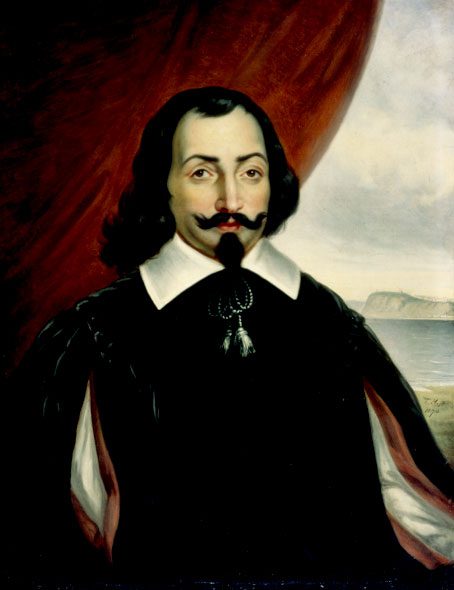In October 1635 he was smitten by a parlytic stroke. He was put to bed in the governor’s chamber of the fort. Surely his window looked down on the noble river, and across the heights of Lévis. He could watch the leaves falling, the first ominous snows whitening the evergreens, and he could live again in memory many another Canadian winter.
He dictated his final will. “I nominate the Virgin Mary my heir,” he said. He left his furniture and his funds in the Hundred Associates to his little Quebec church, Notre-Dame de la Recouvrance.
His friends would gather by his bedside, and to them he would give painfully admonitions for the good of the colony. “He crowned his virtues with sentiments of piety so lofty that he astonished us all,” says Father Le Jeune. “What tears he shed! How ardent became his zeal for the service of God! How great was his love for the families here! He said that they must be vigorously assisted for the good of the country, and made comfortable in every possible way in these early stages, and that he would do it if God gave him health.”
 On Christmas Eve midnight Mass was celebrated in Notre-Dame de la Recouvrance. At the Te Deum, the cannon of the fort boomed three times. And Champlain, hearing the familiar sound, knew that this time the cannon celebrated victory.
On Christmas Eve midnight Mass was celebrated in Notre-Dame de la Recouvrance. At the Te Deum, the cannon of the fort boomed three times. And Champlain, hearing the familiar sound, knew that this time the cannon celebrated victory.
On Christmas Day he died.
Amid the common grief of French and Indians he was buried with all the pomp the colony could command. Shortly after, a chapel, la chapelle de M. de Champlain, was erected to contain his tomb.
Morris Bishop, Champlain: The Life of Fortitude (London: MacDonald & Co., 1949), 335–6.
Short Stories on Honor, Chivalry, and the World of Nobility—no. 741










